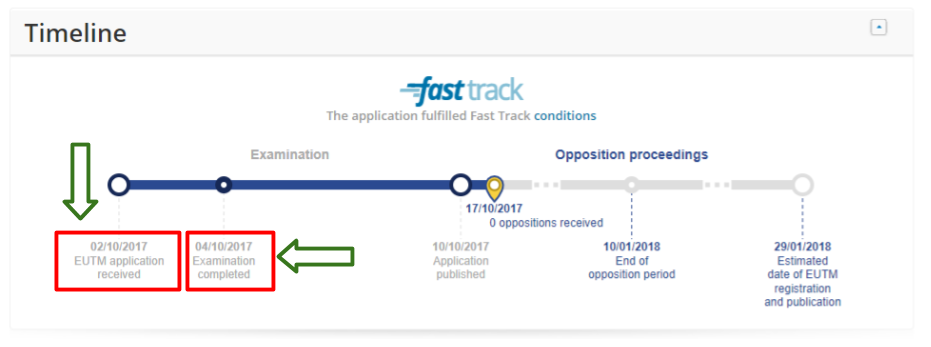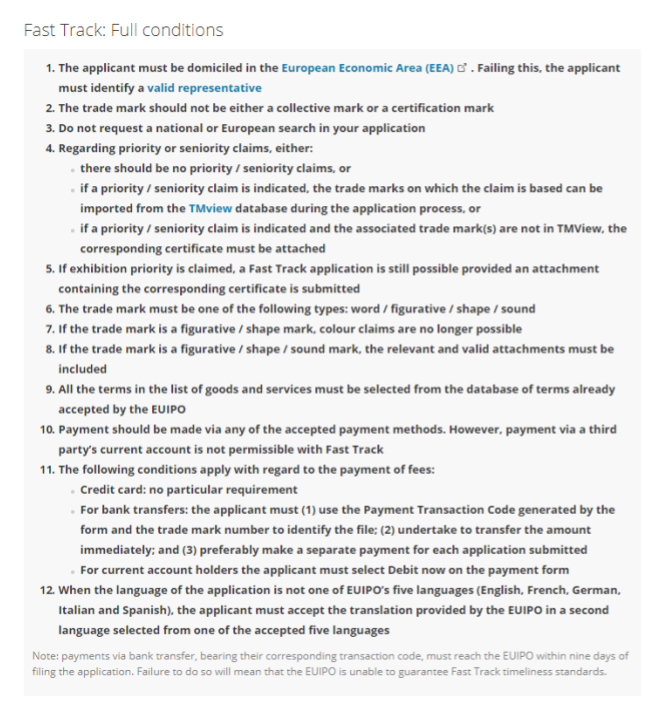It is possible to have you trademark application preliminarily approved in the EU in just a couple of days. Read more to find out how.
How long does it take?
We tell our clients that fast track applications will be examined in 1-2 weeks. In practice this is a conservative estimation, often the examination will take only a couple of days. For example, below is an example of a trademark we filed on 2 October 2017. It was examined in only two days.

It is important to note also that while the fast track applications are examined really quickly, the biggest delay is due to the three month opposition period. So although the examination of the application takes only a couple of days (if all goes well), the registration will be final in about 3,5 months due to the opposition period. That’s still quite fast. Normal examination time at EUIPO is about 1-2 months.
How much does it cost?
Fast track examination does not cost any extra. The application fee is the same as for “normal” (i.e. non-fast track) applications. The only difference is that in order to benefit from the fast track examination the application fee must be paid at the time of filing. In “normal” applications there is one month to pay the government fee. You can see the application fee here.
How to get to fast track?
There a long list of requirements, but for practical purposes the main requirements are these:
- The goods and services must be chosen from EUIPO’s own database of goods and services
- The application fee must be paid at the time of filing (normally there is a one month period to make the payment)
Another requirement is that if the first filing language is other than English, Spanish, German, French or Italian, the applicant must accept the translation provided by the EUIPO in a second language. There are further detailed rules for example for claiming priority or or making colour claims, but in practice these are rarely an issue. This is the full list of conditions:

Source: EUIPO
It is possible that the application enters the fast track examination but is dropped out. This can happen for example if the trademark is deemed to be lacking distinctiveness or if there is doubt about that.
Fast track is available only for “normal” EU trademarks. The following are not entitled to fast track:
- International registrations designating European Union
- Collective marks
- Certification marks
Are there any negative aspects of fast track?
The most obvious drawback is that the applicant can only use those goods and services that are found on EUIPO’s database. This can cause some headaches for example to US or Chinese applicants who wish to claim priority based on a US or Chinese application where the classification of goods and services does not often match the goods and services found on EUIPO’s database.
Another possible downside is that if you want a fast track examination, you cannot use international registration (the “Madrid system”). However, in our opinion this should not be such an issue because direct EU filing has many other advantages as well.
Overall, we think fast track is a fantastic development from EUIPO.


